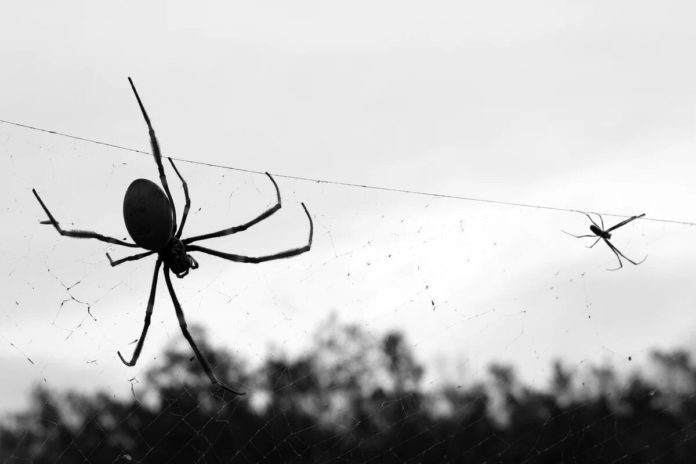The tiny male golden orb-weaving spider has a fraction of the size in front of the massive female. He faces considerable challenges while finding mates.
The first challenge he faces is to enter very carefully into the web and approach a female without being noticed. It is because a cannibalistic female will kill and eat him if he makes one wrong move on her web.
Another challenge is the presence of other males in the delicate arena of that web.
Despite the challenges and complexity of situations, the tiny male golden orb-weaving spider manages it.
How do they manage?
This is a question that has captivated Alex Jordan and members of his lab at the Max Planck Institute of Animal Behavior for over a decade. Now, teaming up with researchers from the Weizmann Institute of Science, they are closer to an answer.
The solution appears to lie in animal magnetism, or more correctly, in the effective physical forces that males and females experience on the elastic surface of the spider web.
“Our initial concept was to explore the idea that these spiders moving on the web behave like electrons orbiting a nucleus, or planets orbiting a star,” says Jordan, who leads the Integrative Behavioral Ecology Lab at the Max Planck Institute of Animal Behavior, and is co-senior author on the study. A research program was born from this initial idea, leading the two teams to develop a physical model and perform experiments in the Panamanian rainforest.
While the details of the precise physics ultimately diverged from both atomic and cosmic levels, the concept proved useful.
“Imagine electrons orbiting a nucleus, or a massive star in space, so large that it generates its own gravitational field pulling in objects around it—the giant, cannibalistic female can be thought of in the same way,” says Jordan. “Now imagine smaller planets, satellites, or comets coming near this attractive force—these are our tiny, brave males.” Approach the star (or female) too rapidly or at the wrong angle, and you risk getting caught up in her attractive pull. This will result in a cosmic collision that vaporizes the planet on a cosmic scale. For the intrepid male, an incorrect approach means falling into a fatal attraction and ending up as prey.
“Working in the rainforests of Panama, I’ve seen over-zealous males fall victim to the cannibalistic females many times, especially when they take the wrong path, or approach the female too fast,” says Sylvia Garza, the co-author of the study, who spent months in Panama as a Master’s student recording the behavior of male and female spiders, then using machine-learning approaches to track their every movement.
“The motion of these males resembles interactions between particles that attract or repel one another depending on the distance between them,” says Amir Haluts, a physicist by training and lead author of the study from the Weizmann Institute of Science. Co-senior author Nir Gov, also from the Weizmann, says: “We use models to map the effective physical forces that males experience, allowing us to explain their motion on the web, as well as contest dynamics of males of different sizes.”
As the males orbit one another, they will eventually come too close together, crashing into each other in open fighting. All this is played out on the surface of the web, which acts as the conduit for the vibrations males use to communicate, but which can also alert the female to their presence and lead to a fatal attack.
Research demonstrates that solutions don’t require intelligence or understanding of that game, rather it can be achieved by sensing vibrations on the web and responding to the physical forces of attraction and repulsion, just as physical particles might do.
“Early on, I was perplexed by our first results, which showed that these males could solve these complex tasks apparently without the required cognitive machinery,” says Jordan. “I joked with Nir that it’s almost like these males are electrons orbiting around the female’ nucleus’. This led to us coining the term ‘Atomic Spiders,’ and it turns out that it may not be that far from the truth.”
Journal Reference
- Amir Haluts et al, Spatiotemporal dynamics of animal contests arise from effective forces between contestants, Proceedings of the National Academy of Sciences (2021) 118 (49) e2106269118;. DOI: 10.1073/pnas.2106269118
